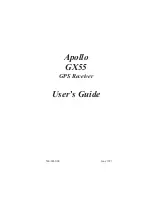
190-00870-02 Rev. A
Garmin G950 Pilot’s Guide for the Pilatus PC-6
325
HAZARD AVOIDANCE
SY
STEM
O
VER
VIEW
FLIGHT
INSTRUMENTS
EIS
AUDIO P
ANEL
& CNS
FLIGHT
MANA
GEMENT
HAZARD
AV
OID
ANCE
AFCS
ADDITIONAL
FEA
TURES
APPENDICES
INDEX
Terrain and obstacle databases are referenced to GSL. Using the GPS position and altitude, the Terrain-SVS
feature portrays a 3-D picture of the surrounding terrain and obstacles relative to the position and altitude of the
aircraft. GPS position and GSL altitude are used to calculate and predict the aircraft’s flight path in relation to
the surrounding terrain and obstacles. In this way, the pilot can view predicted dangerous terrain and obstacle
conditions.
DISPLAYING TERRAIN-SVS DATA
Terrain-SVS uses yellow (caution) and red (warning) to depict terrain and obstacles (with heights greater than
200 feet above ground level, AGL) alerts relative to aircraft altitude. Colors are adjusted automatically as the
aircraft altitude changes. The colors and symbols in Figure 6-38 and Tables 6-12 and 6-13 are used to represent
terrain, obstacles, and potential impact points.
Figure 6-38 Terrain Altitude/Color Correlation for Terrain-SVS
Unlighted Obstacle
Lighted Obstacle
Obstacle Location
< 1000’ AGL > 1000’ AGL < 1000’ AGL > 1000’ AGL
Red obstacle is above or within 100 ft
below the aircraft altitude
Yellow obstacle is between 100 ft and
1000 ft below the aircraft altitude
Table 6-9 Terrain-SVS Obstacle Colors and Symbology
Potential Impact
Point Symbol
Alert Type
Example Annunciation
Warning
Caution
Table 6-10 Terrain-SVS Potential Impact Point Symbols with Alert Types







































